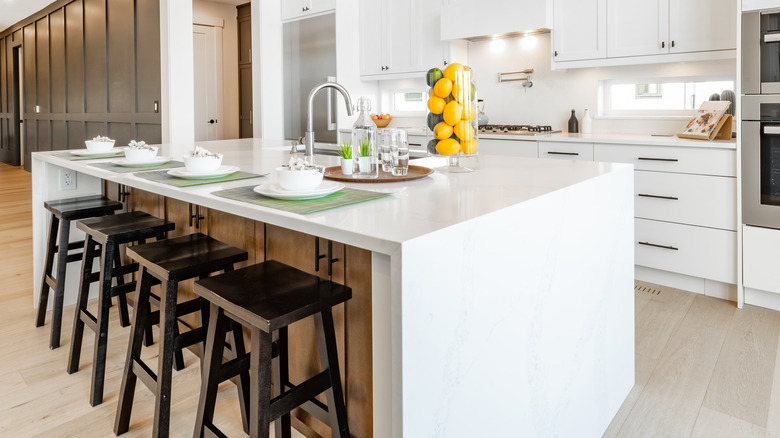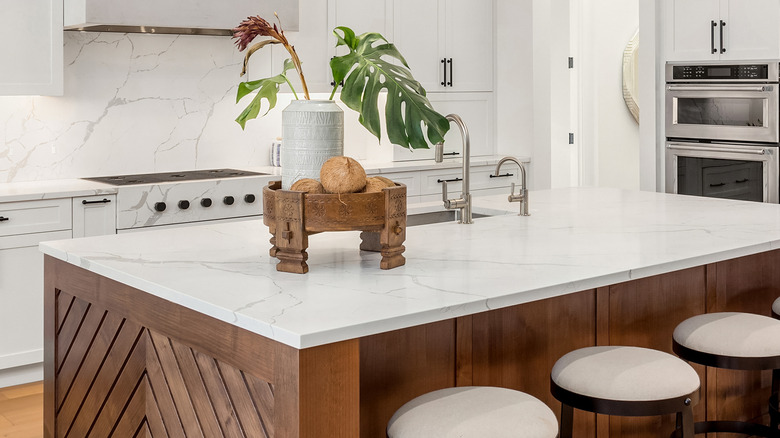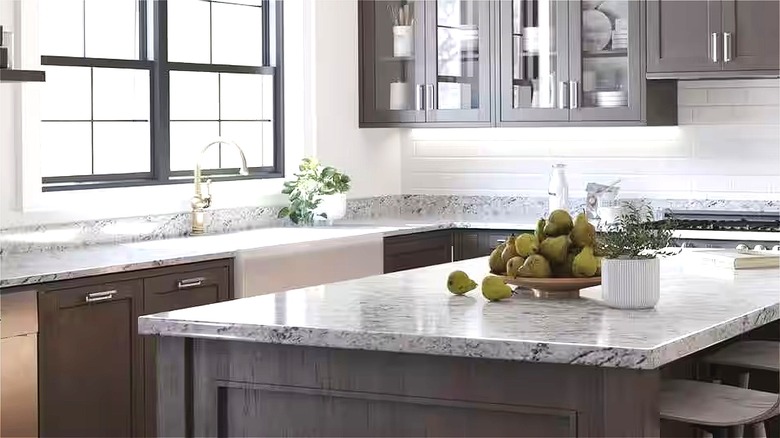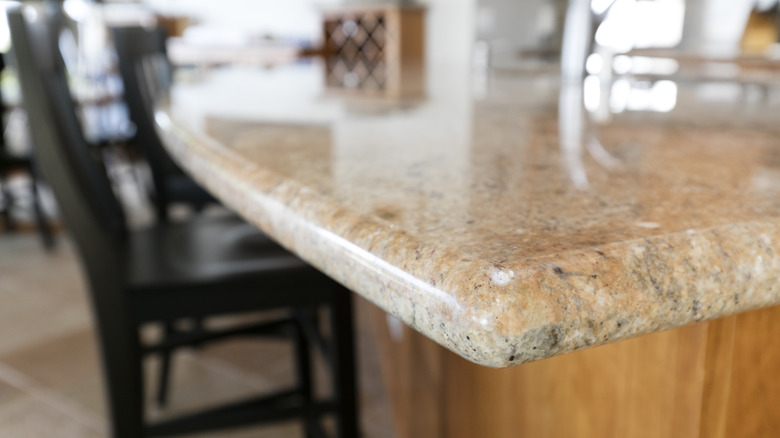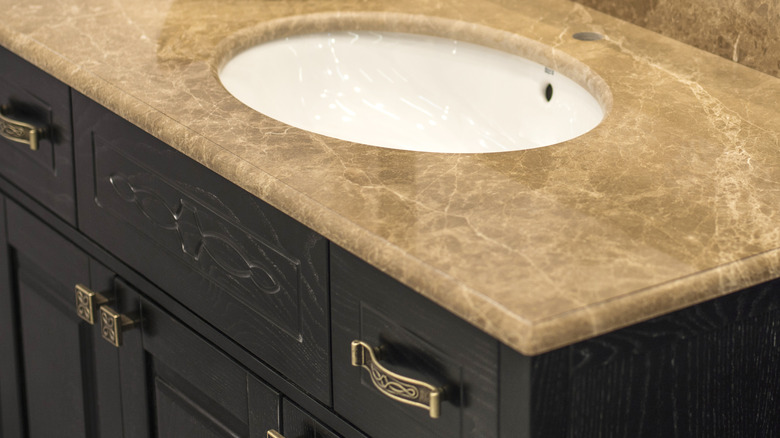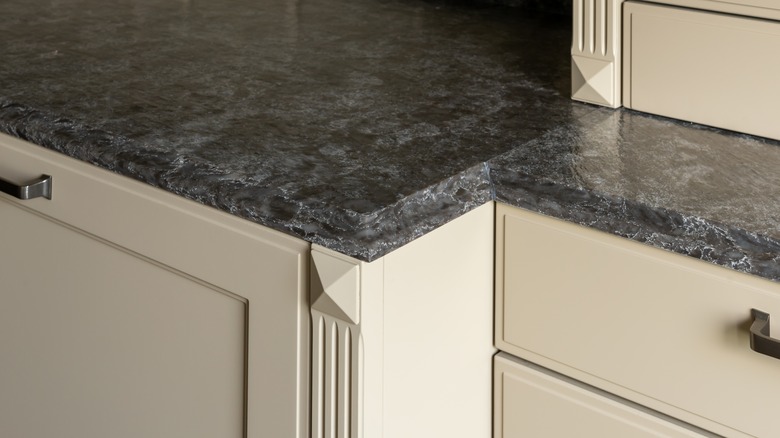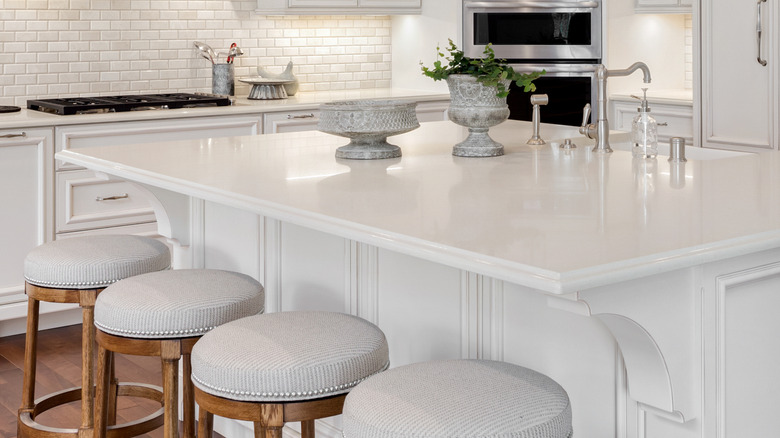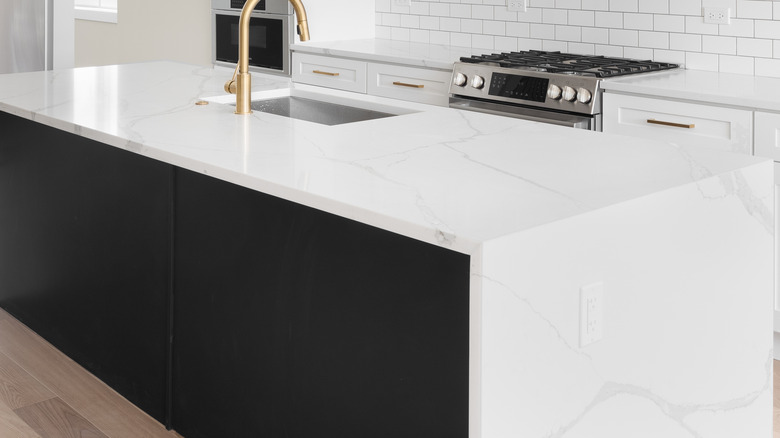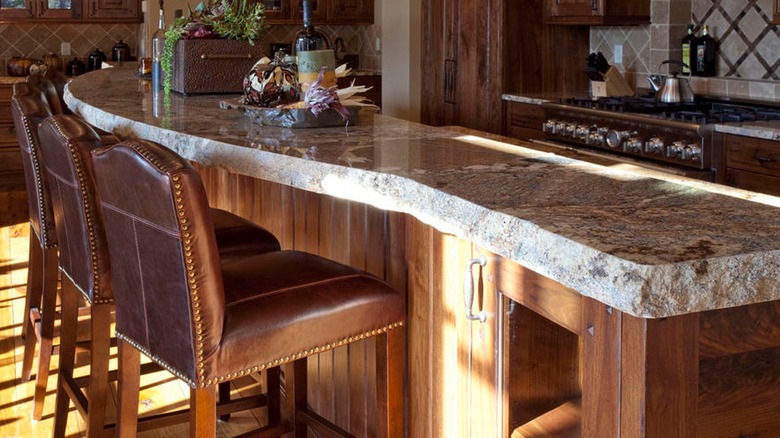These Are The Most Common Countertop Edge Styles
Countertops are one of a kitchen or bathroom's main design features. While many homeowners focus on choosing the right material, color, and veining of their countertops before a bathroom or kitchen remodel, there's another detail that should be considered. Countertop edges may seem like a small detail, but they can be a way of cementing the aesthetic of the room and can serve as a safety aspect.
When having countertops fabricated, many may simply choose the most standard edge style. However, putting some thought into the edge can make a huge difference in the appearance of your countertops. When considering the many types, it's important to remember that not every material will have every style available. It often depends on the durability of the material and if it will be able to handle the carving of the style. Because of this, durable stones like quartz will have more options than a material like laminate.
Along with the style of the room, the size of the room should also be considered when choosing the right edge style, as you need to have enough space to walk around the counter without hitting a sharp corner. You have plenty of options that will work both aesthetically and functionally for your home and all who live there. From simple, clean lines to more ornate and decorative finishes, there is an edge type that is sure to work for your home.
Straight edge
As the name implies, straight edge countertops are just that: straight. The edges meet at 90-degree angles to form a square. This style is clean and simple, which leads many homeowners to use them for more modern and contemporary designs. However, straight edges may not be the best option for families with kids, as the sharper corners can pose a safety risk, especially since they're at face-level for small children. Points and tips are also the most fragile part of most objects, so these corners can be prone to chipping if excess force is applied.
Eased edge
Eased edges are similar to straight edges but with more rounded corners. This type is great if you still want that clean, modern look, but they're a little bit safer because of the lack of sharp points. Use eased edges in contemporary kitchens and family homes. The slight curve makes this countertop style more durable and less prone to chipping, which is ideal for busy kitchens. This type also works well for small kitchens because of their slightly-rounded corners that won't cause harm if run into.
Bullnose edge
If you're a fan of curves, the bullnose edge will probably be your go-to. This style features a curve along the top and bottom of the countertop, giving the edge a rounded finish. Working well in both contemporary and traditional homes, the round edge can create a soft detail among the straight lines of modern homes and offer a sleeker finish for classic interiors. This edge can also be created on laminate counters as well as stone materials. It's a safe and durable finish, which is great for busy homes.
Half-bullnose edge
Where the bullnose has an edge that curves all the way around, the half-bullnose curves down to a flat underside. This edge still has a softness to it if you're not a fan of clean lines. Half-bullnose edges are often used in more traditional spaces but can also work as an accent in contemporary homes. This type can make countertops look thicker, so if a sleek look is what you're after, this style won't work well for you. However, if you don't mind the chunkier finish, choose this type for stone countertops.
Ogee edge
The ogee edge creates an S-shape on the side of the countertop. This is one of the most decorative countertop edges because of the dramatic curves. It leans towards being more traditional, so it's often best used with interiors that are more ornate or classically-designed. Double ogee edges have two tiers of S-shapes. This style also requires extra depth, so it's best for larger kitchens that can accommodate more space. A high-quality stone is required to complete this complicated cut. Coupled with it being difficult to create, the ogee edge is often more expensive.
Beveled edge
Beveled edges have a 45-degree-angle cut on the top corner before going into a flat front edge. This edge is a good transition between contemporary and traditional styles, as it's still clean and straight but is not a simple square. The angled cut creates a distinction between the countertop's surface and the side edge, adding a decorative frame around the countertop. There are both ¼ and ½ bevels available, with the ½ bevel having the more defined slant. This style can also be just on the top surface or on both the top and bottom.
Mitered edge
Mitered edges put two countertop slabs cut at a 45-degree angle together to create a 90-degree point. These are used to create waterfall countertops, which feature a slab of countertop on the side of the island that meets the floor. You cannot have one slab cut in a mitered edge as it would be too sharp, so this style is often expensive because it requires more stone. Waterfall counters are typically favored in contemporary interiors. While often featured on the island, they can also be used on the side of base wall cabinets as well.
Chiseled edge
Chiseled edges have a rough finish rather than a smooth face. This gives the appearance of a rustic and natural stone rather than one that has been fabricated and polished. Chiseled edges, though popular, are considered to be a custom option, which can often come at a higher price point. This type can add plenty of texture and visual interest to a room. However, because of its rougher finish, consider it for larger spaces where you have enough room to get around without brushing up against it.
